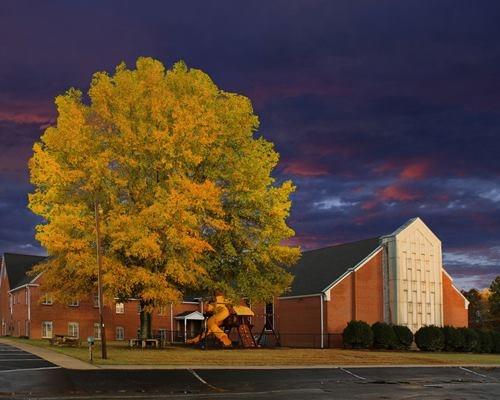History of Brick Reformed Church
The Brick United Church of Christ originated in 1748 when brothers George Valentine Clapp and John Ludwick Clapp of Berks County, Pennsylvania decided to settle in Beaver Creek which would later be known as the Guilford-Alamance county line. According to tradition, a dream by the wife of George Valentine Clapp determined the site of the church, and it was known in its earliest days as Beaver Creek Church, because of its location.
The Clapp brothers purchased the land from Henry McCulloh who was an agent of the Colonial proprietor of North Carolina. These two German families were the original founders of the German Reformed Church in Guilford County. The brothers along with their pioneer neighbors then built a school house on the land which was used for religious meetings and community gatherings.
The first written record of an organized congregation is from 1770 when Reverend Samuel Suther provided the first permanent ministrations of the Gospel to the congregation, and was conducting services for both the Reformed and Lutherans.
When Reverend James Riley joined the church for a year in 1813 he left a lasting and visual imprint on the church’s history. Under his leadership, 57 new members were prepared for the Memorial Communion, the largest ever held at Clapp Church. Riley also proposed plans to erect a house of brick to replace the former log church of Clapp’s Parish. The Brick Church, partially build in 1814 was the first known brick church in North Carolina.
The high quality of spiritual foundation imposed in the Clapp Church – the old Brick Church continues as a commemorative marker to a denomination. In this homemade brick building, in 1831 the German Reformed Synod organized the Classis of North Carolina. This was the first official ecclesiastical group establishment of the denomination south of Pennsylvania. The Southern Synod of the Evangelical and Reformed Church merged in the 1960s with the Congregational Christian Church to form the United Church of Christ. In 2014 the congregation voted to leave the United Church of Christ and is now officially a non-denominational church.
Many pulpit leaders have emerged and attained a degree of prominence. Its lay leaders are notable in church records; and in area and period histories.
